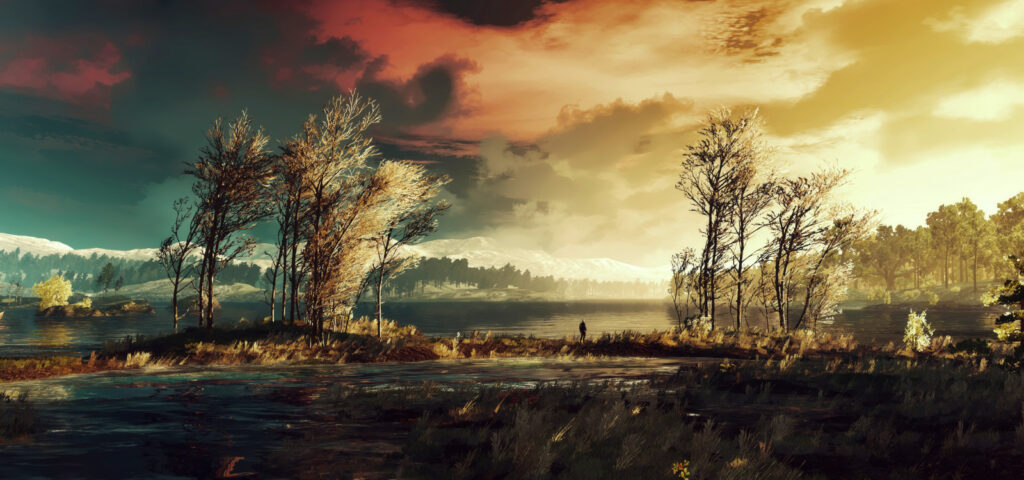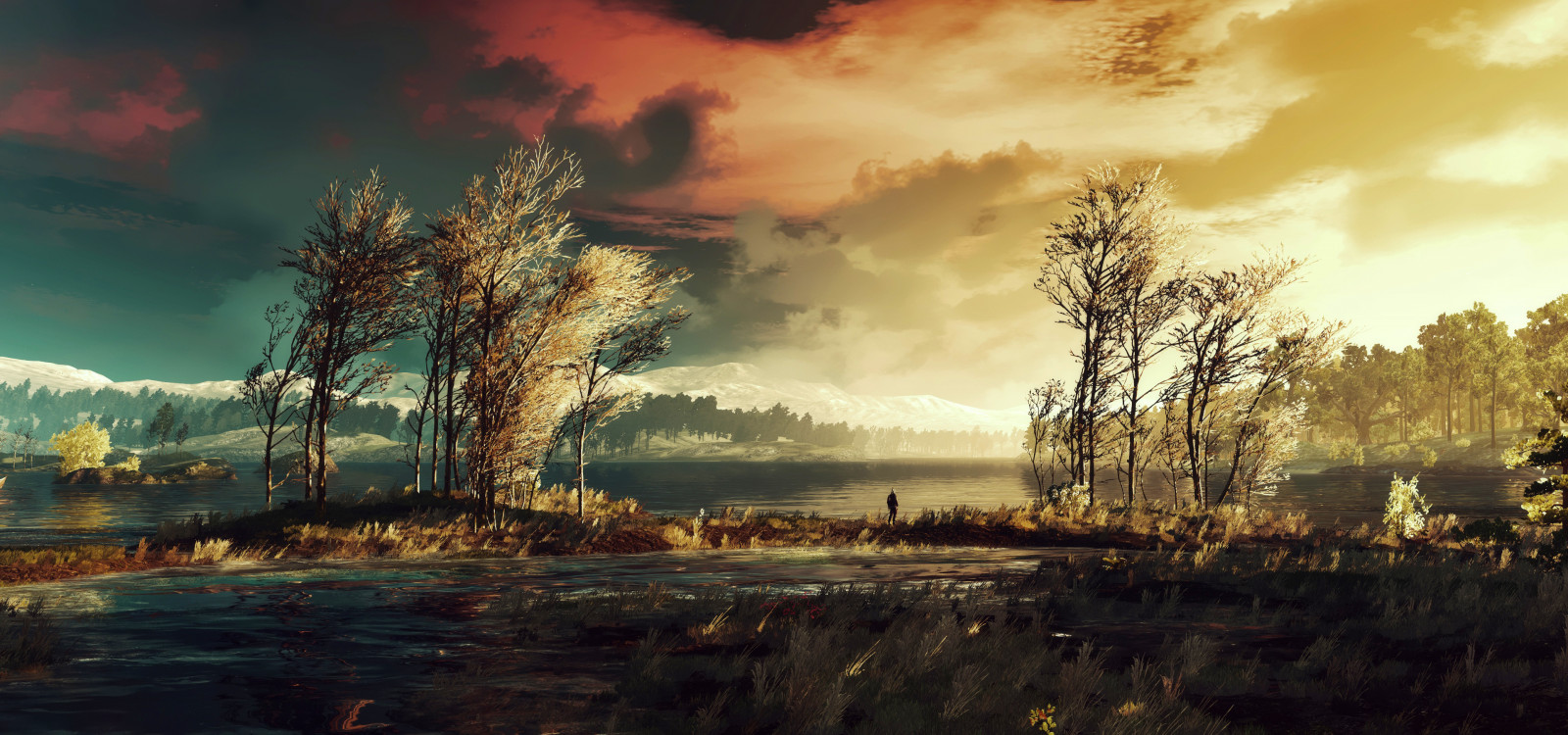
Exploring the Breathtaking Beauty of Video Game Landscapes: A Deep Dive
Video game landscapes have evolved from simple, pixelated backgrounds to sprawling, photorealistic environments that rival the beauty of the real world. These digital vistas are not just backdrops; they are integral parts of the gaming experience, influencing gameplay, storytelling, and player immersion. This article delves into the artistry, technology, and impact of video game landscapes, exploring how they have become a crucial element in modern game design.
The Evolution of Video Game Landscapes
The earliest video games featured rudimentary landscapes, often consisting of simple sprites and repetitive tiles. Games like Pong and Space Invaders had minimal environmental detail, focusing instead on core gameplay mechanics. As technology advanced, so too did the complexity and realism of video game landscapes.
From 2D to 3D: A Technological Leap
The transition from 2D to 3D graphics was a pivotal moment. Games like Doom and Wolfenstein 3D, while still primitive by today’s standards, offered a sense of depth and immersion that was previously impossible. The introduction of polygonal graphics allowed for more detailed and realistic environments. This opened the door for developers to create more expansive and engaging video game landscapes.
The Rise of Open-World Environments
The late 1990s and early 2000s saw the rise of open-world games, which emphasized exploration and player freedom. Games like The Legend of Zelda: Ocarina of Time and Grand Theft Auto III showcased vast, interconnected worlds that players could traverse at their leisure. These video game landscapes were not just static backgrounds; they were dynamic environments filled with secrets, challenges, and opportunities for discovery.
The Artistry Behind Video Game Landscapes
Creating compelling video game landscapes is a complex and collaborative process involving artists, designers, and programmers. These professionals work together to craft environments that are both visually stunning and functionally integral to the gameplay experience.
Concept Art and Worldbuilding
The creation of a video game landscape typically begins with concept art. Artists create sketches and paintings that visualize the overall look and feel of the environment. This concept art serves as a blueprint for the 3D modelers and level designers who will bring the landscape to life. Worldbuilding is also a crucial aspect, involving the creation of detailed lore, history, and culture for the game world. This adds depth and context to the video game landscapes, making them feel more believable and immersive.
Level Design and Environmental Storytelling
Level designers are responsible for creating the actual layouts of the game environments. They must consider factors such as player movement, combat encounters, and puzzle design. Environmental storytelling is a technique used to convey narrative information through the design of the landscape itself. For example, a ruined building might suggest a past conflict, while a lush forest could indicate a thriving ecosystem. These details enrich the video game landscapes and make them more engaging for players. [See also: Game Design Principles for Immersive Worlds]
The Technology Powering Video Game Landscapes
The visual fidelity of video game landscapes has improved dramatically over the years, thanks to advancements in graphics technology. Modern games utilize a variety of techniques to create realistic and immersive environments.
Procedural Generation
Procedural generation is a technique used to automatically create video game landscapes using algorithms. This allows developers to generate vast and diverse environments without having to manually design every detail. Games like No Man’s Sky and Minecraft rely heavily on procedural generation to create their expansive worlds. While procedural generation can produce impressive results, it can also lead to repetitive or uninspired landscapes if not carefully implemented. [See also: The Future of Procedural Generation in Gaming]
Photogrammetry and Real-World Data
Photogrammetry is a technique used to create 3D models from photographs. Developers can use photogrammetry to capture real-world environments and incorporate them into their games. This allows for incredibly realistic and detailed video game landscapes. Games like Hellblade: Senua’s Sacrifice have used photogrammetry to create stunningly realistic environments based on real-world locations.
Ray Tracing and Global Illumination
Ray tracing is a rendering technique that simulates the way light interacts with objects in the real world. This allows for more realistic lighting and shadows, which can significantly enhance the visual quality of video game landscapes. Global illumination is a related technique that simulates the way light bounces around a scene, creating more natural and realistic lighting. These technologies are becoming increasingly common in modern games, pushing the boundaries of visual fidelity. The impact of ray tracing on video game landscapes is undeniable, creating a more immersive and believable experience.
Examples of Iconic Video Game Landscapes
Throughout gaming history, certain video game landscapes have become iconic, leaving a lasting impression on players and shaping the industry. Here are a few notable examples:
- Hyrule (The Legend of Zelda series): The kingdom of Hyrule, with its sprawling fields, dense forests, and towering castles, is one of the most recognizable video game landscapes of all time.
- Azeroth (World of Warcraft): The world of Azeroth is a vast and diverse fantasy landscape filled with unique biomes, from the snow-capped mountains of Dun Morogh to the lush jungles of Stranglethorn Vale.
- Night City (Cyberpunk 2077): A sprawling, dystopian metropolis filled with towering skyscrapers, neon lights, and gritty streets. The densely packed video game landscape reflects the cyberpunk themes.
- The Mojave Wasteland (Fallout: New Vegas): A desolate and unforgiving desert landscape dotted with ruined cities, abandoned settlements, and mutated creatures.
- Red Dead Redemption 2’s Open World: From the snowy peaks of the Grizzlies to the swamps of Lemoyne, the diverse environments are rendered in stunning detail, making it one of the most immersive video game landscapes ever created.
The Impact of Video Game Landscapes on Player Immersion
Video game landscapes play a crucial role in creating a sense of immersion for players. A well-designed landscape can transport players to another world, making them feel like they are truly part of the game.
Sense of Place
A compelling video game landscape can create a strong sense of place, making players feel connected to the game world. This can be achieved through detailed environmental design, realistic sound effects, and dynamic weather systems. When players feel like they are truly inhabiting the game world, they are more likely to become invested in the story and characters.
Emotional Connection
Video game landscapes can also evoke strong emotions in players. A beautiful vista can inspire awe and wonder, while a desolate wasteland can create a sense of despair and isolation. By carefully crafting the emotional tone of the landscape, developers can enhance the overall impact of the game.
Gameplay Integration
Ultimately, the most successful video game landscapes are those that are seamlessly integrated with the gameplay. The landscape should not just be a backdrop; it should be an active participant in the game. This can be achieved through environmental puzzles, dynamic events, and strategic use of terrain. When the landscape is an integral part of the gameplay, it becomes a truly unforgettable experience.
The Future of Video Game Landscapes
As technology continues to advance, the future of video game landscapes looks brighter than ever. We can expect to see even more realistic and immersive environments in the years to come.
Virtual Reality and Augmented Reality
Virtual reality (VR) and augmented reality (AR) technologies have the potential to revolutionize the way we experience video game landscapes. VR headsets can transport players directly into the game world, creating a truly immersive experience. AR technology can overlay game elements onto the real world, blurring the line between reality and fiction.
AI-Powered Environments
Artificial intelligence (AI) is already being used to create more dynamic and responsive video game landscapes. AI can be used to generate realistic wildlife behavior, create dynamic weather patterns, and even adapt the landscape to the player’s actions. As AI technology continues to improve, we can expect to see even more sophisticated and immersive game environments.
Cloud Gaming and Streaming
Cloud gaming and streaming services have the potential to make high-quality video game landscapes accessible to a wider audience. By streaming games from powerful servers, players can experience cutting-edge graphics and immersive environments without having to invest in expensive hardware. This could democratize access to high-end gaming experiences and open up new possibilities for game design.
In conclusion, video game landscapes have come a long way since the early days of gaming. They are now an integral part of the gaming experience, influencing gameplay, storytelling, and player immersion. As technology continues to advance, we can expect to see even more breathtaking and immersive video game landscapes in the future. The evolution of video game landscapes is a testament to the creativity and innovation of the gaming industry. From simple 2D backgrounds to sprawling, photorealistic environments, these digital vistas continue to captivate and inspire players around the world.

